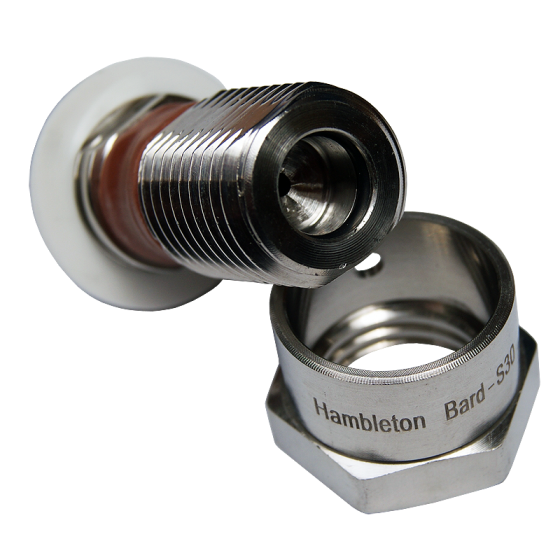S30 Co2 Pressure Top Up Valve (Non Piercing Pin Type)
S30 Co2 Pressure Top Up Valve (Non Piercing Pin Type)
£14.99
Ex Tax: £14.99
- Stock: 12 In Stock
- S30 Co2 Pressure Top Up Valve (Non Piercing Pin Type)
- For Use With Hambleton Bard's S30 And Also L30 Cylinders.
- Not Suitable For 8g Bulb System
Tonys Tips
TheseS30 Pressure Top Valves come with pressure release as Standard shown here, without Piercing Pin for use with the S30 or L30 Screw on CO2 Cylinders
Fitting the Valve in 2" or 4" caps
These S30 valves are well madeand are a good deal stronger than the plastic Barrel Caps in which they are inserted and fixed.
It is therefore necessary to use TWO Spanners to tighten the securing nut so as not to depend on the flat sided hole in the soft plastic cap to prevent rotation of the valve as the nut is tightened.
To do this without shearing the cap hole and causing leakage, hold the larger spanner on the securing nut while the smaller spanner holds still the straight sided threaded shaft of the S30 valve above. Now gently tighten the nut so that the rubber washer is in firm contact with the cap and valve flange on the cap.
Be careful not to over-tighten the valve as the rubber washer may be distorted and dragged out of shape risking leakage.
TheseS30 Pressure Top Valves come with pressure release as Standard shown here, without Piercing Pin for use with the S30 or L30 Screw on CO2 Cylinders
Fitting the Valve in 2" or 4" caps
These S30 valves are well madeand are a good deal stronger than the plastic Barrel Caps in which they are inserted and fixed.
It is therefore necessary to use TWO Spanners to tighten the securing nut so as not to depend on the flat sided hole in the soft plastic cap to prevent rotation of the valve as the nut is tightened.
To do this without shearing the cap hole and causing leakage, hold the larger spanner on the securing nut while the smaller spanner holds still the straight sided threaded shaft of the S30 valve above. Now gently tighten the nut so that the rubber washer is in firm contact with the cap and valve flange on the cap.
Be careful not to over-tighten the valve as the rubber washer may be distorted and dragged out of shape risking leakage.

